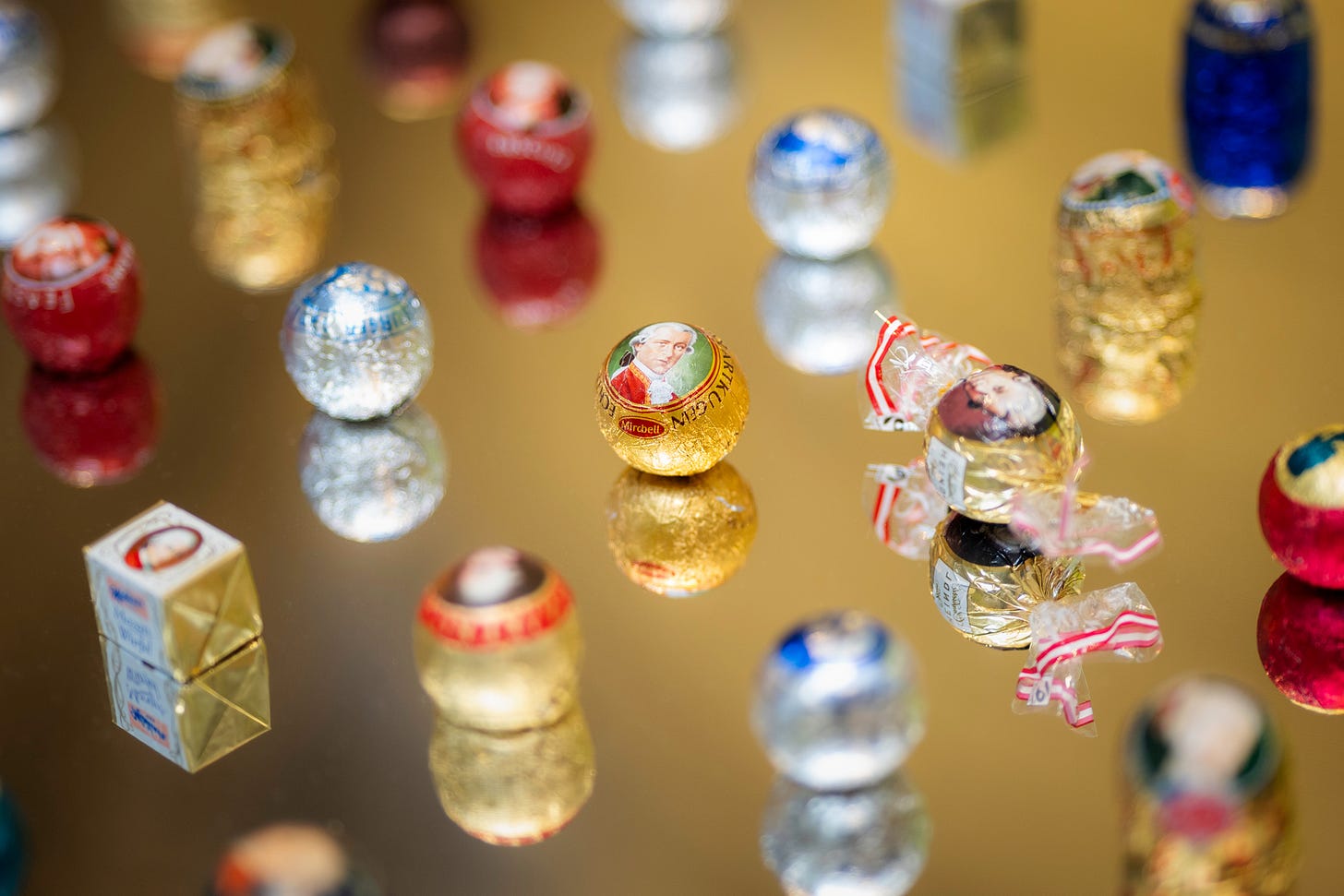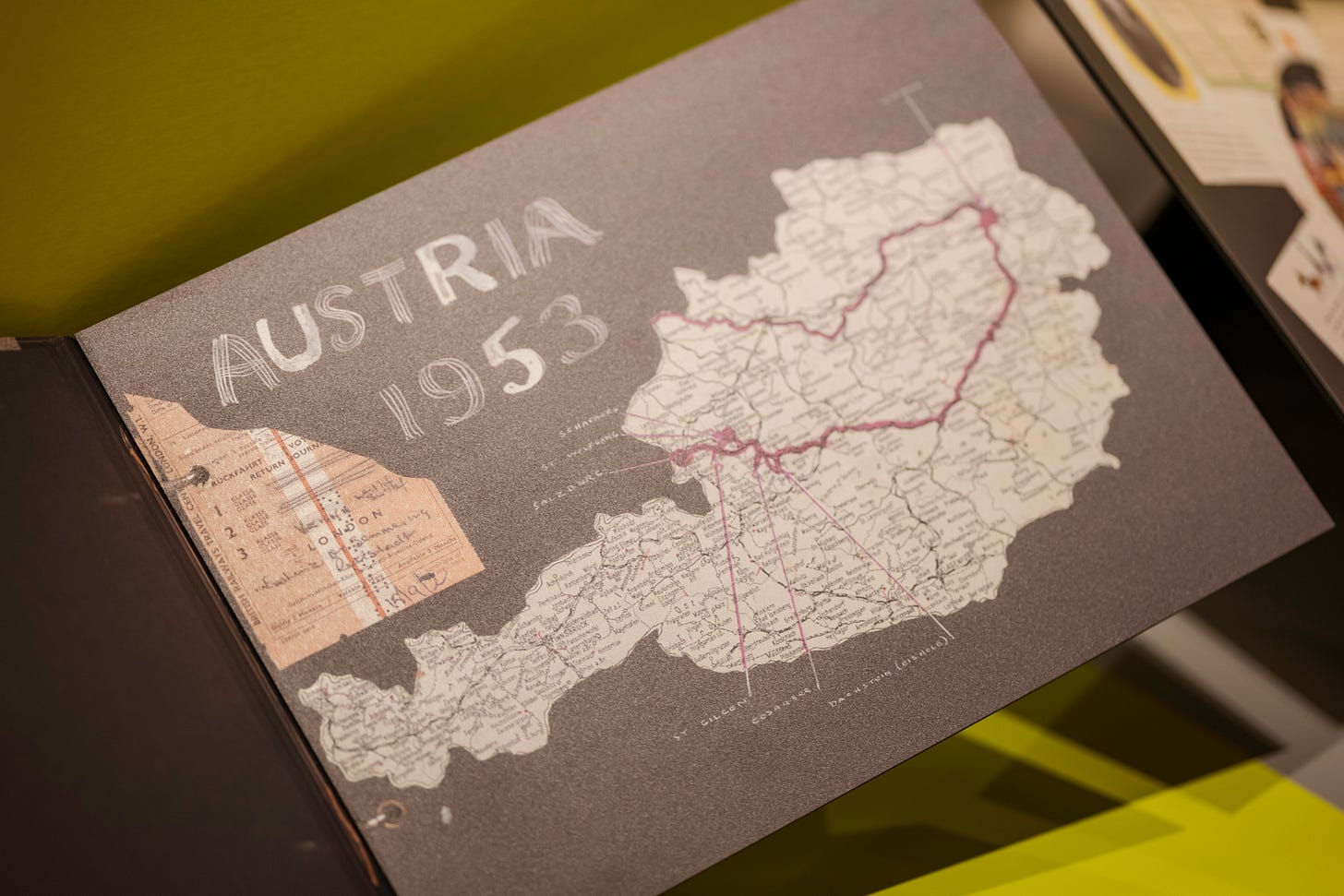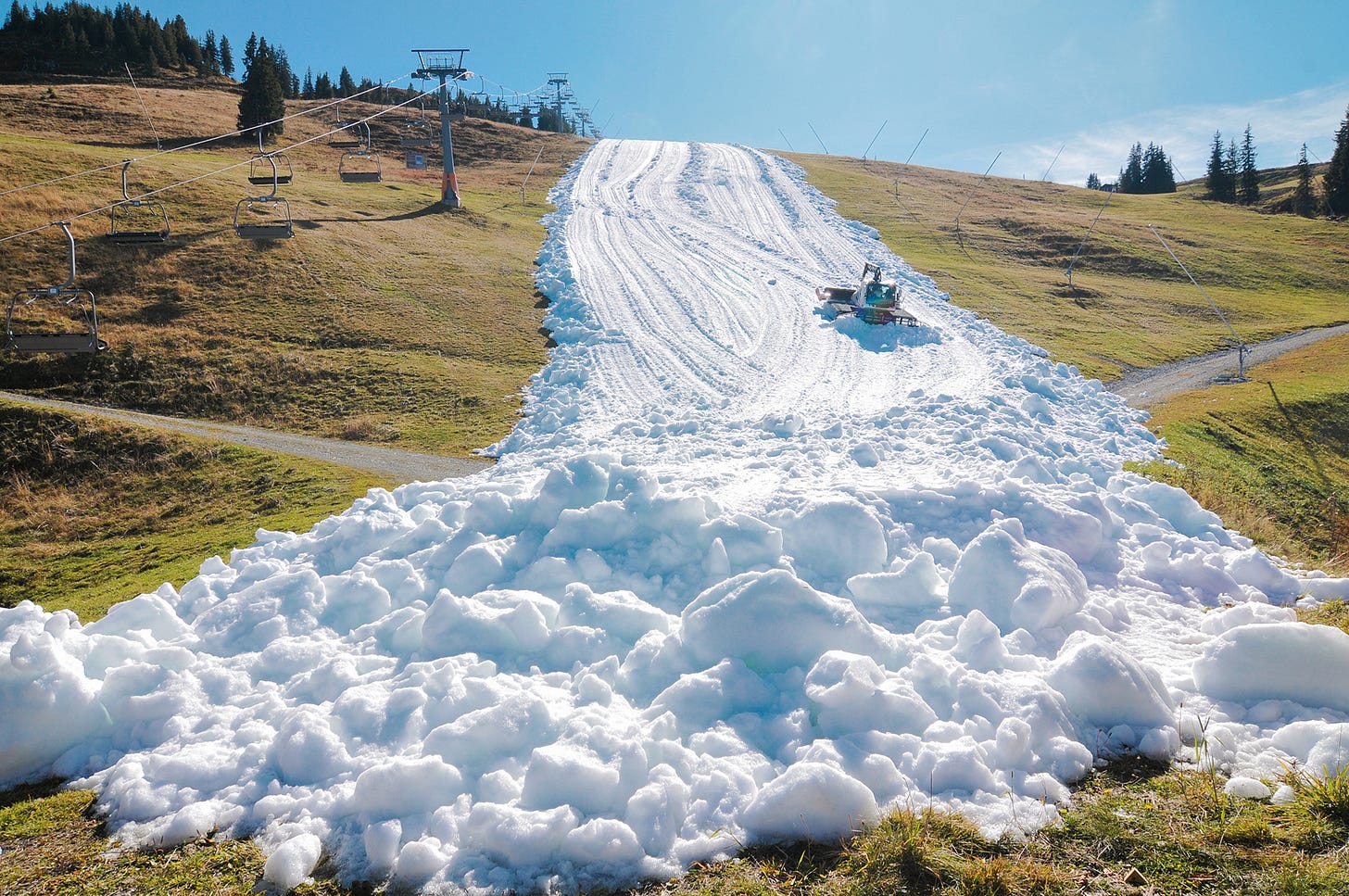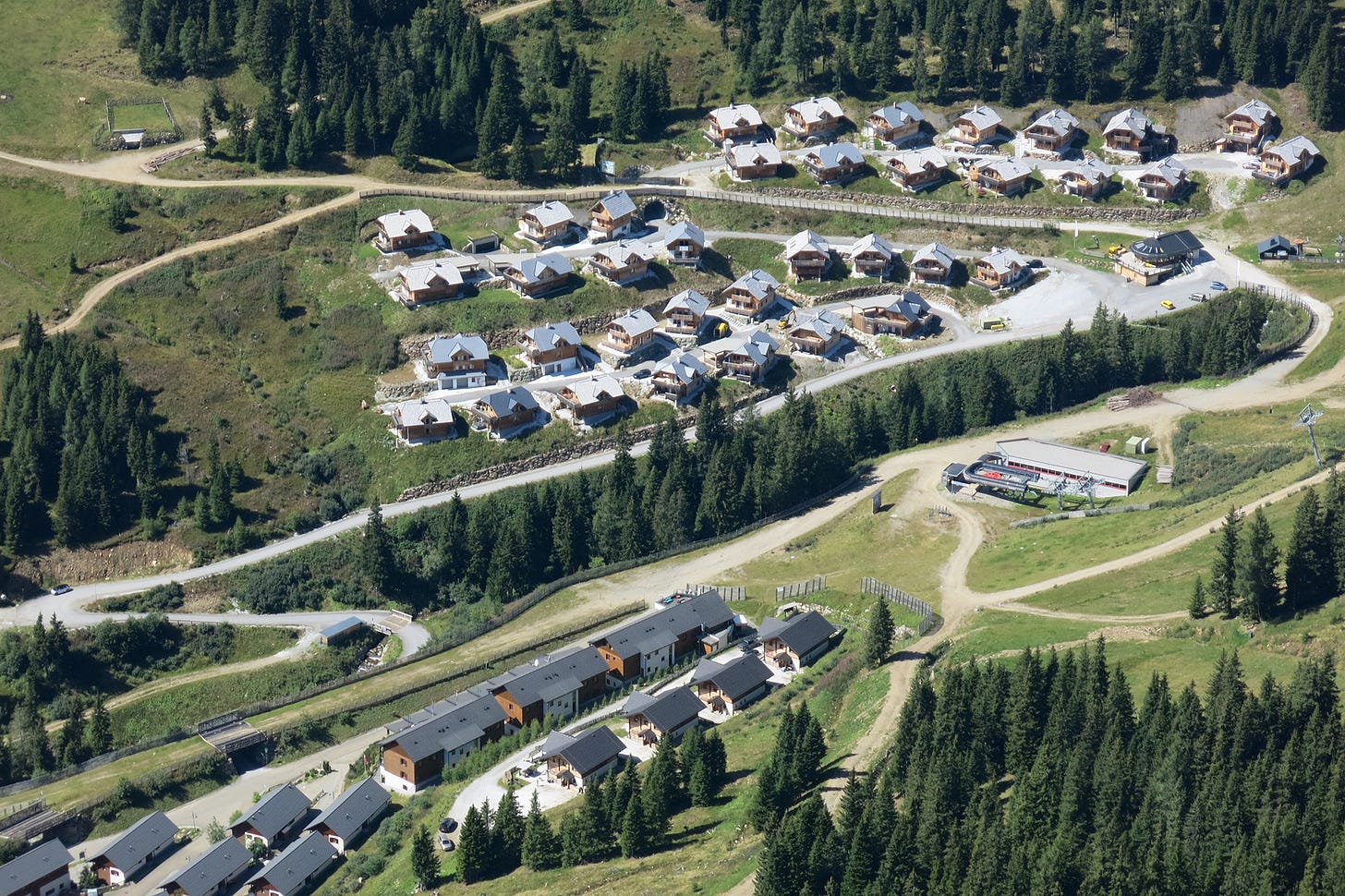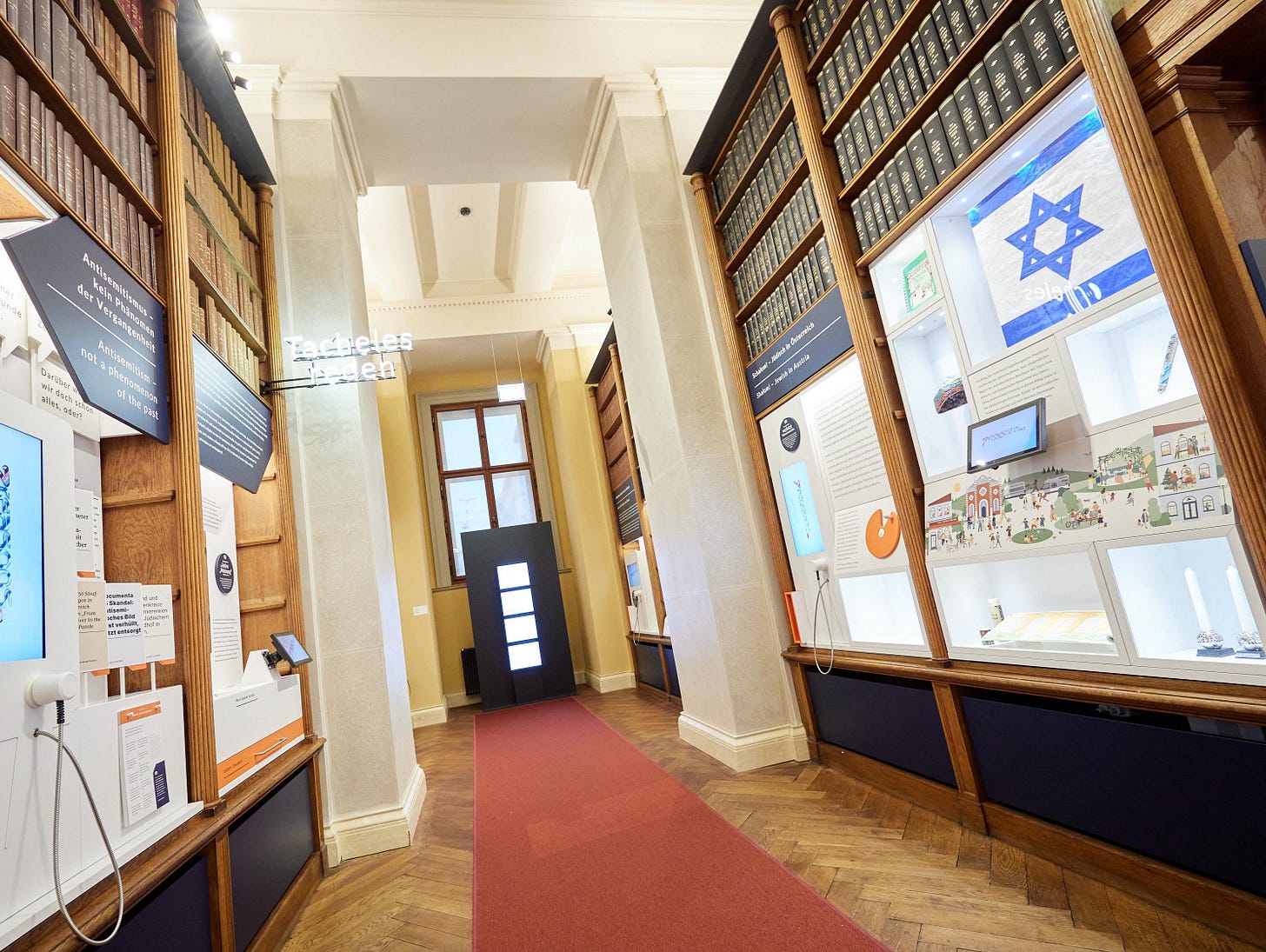Holidays in Austria / Toourism
Two new exhibitions that have just opened in Vienna look at what tourism has meant for Austria and what international travel has meant for us all
Servus!
Following the COVID-19 pandemic, during which cross border travel became an impossibility, the tourism industry has bounced back—including in Austria, as anyone who lives in Vienna or one of the country’s tourist hotspots cannot have failed to notice. Over 150 million overnight stays were recorded in Austria in 2023—only 1 percent below pre-pandemic levels. While the largest markets for international tourism into Austria remain Germany and the Netherlands, overnight stays by guests from China, Taiwan, and Japan increased by 234 percent, 701 percent, and 140 percent respectively compared to the year prior due to the lifting of pandemic restrictions in those countries.
This wanderlust, its meaning and its consequences, are the subject of two new exhibitions now running in Vienna: “Holidays in Austria: Reinventing a Tourist Destination” at the House of Austrian History, and “Toourism” at the Architekturzentrum Wien. The starting point for the former were two photo albums belonging to Joyce Evens and Eric Hope, a British couple who undertook two trips to Austria in 1953 and 1954. Their travels took them the length and breadth of Austria, and their photographs capture the country at a quieter, but nonetheless rather significant moment in its history as it was recovering from the devastation it brought upon itself during the Second World War.
Evens and Hope’s photographs are not only a window into Austria but also a reflection of how Austria wanted to see itself. As it sought to build up its tourism industry beginning in the 1950s as part of the country’s economic recovery, Austria was both selling an image of itself to the world and constructing a new national identity. As it was reinventing a tourist destination, as the exhibition’s subtitle would have it, Austria was also inventing a nation where there hadn’t really been one before. The country’s landscape, art, culture, cuisine, and traditions are what attracts people still to Austria as well as how Austria continues to understand itself.
Tourism, as the Architekturzentrum Wien’s exhibition “Toourism” explains, is a cornerstone of the Austrian economy, particularly in western states like Tyrol and Salzburg where its mountains act as a magnet during the ski season and political and economic interests are inter-meshed. Austria is certainly not as dependent on tourism as some European countries such as Spain or Croatia, and Vienna does not suffer from many of of problems associated with overtourism that blight Amsterdam, Dubrovnik, and Barcelona. Still, tourism is more important to Austria’s economy when compared to Europe’s as a whole.
“Toourism” considers what international tourism has meant for Austria in the long run. A driver of prosperity, especially in rural areas, and harbinger of cosmopolitanism, some hotspots are simply no longer able to cope with the herds of tourists being driven through their communities. Hallstatt would likely have died out long ago were it not for tourism, but thanks largely to growth in the Asian market, a village of 700 people that had about 50,000 visitors in 2005 welcomed almost 150,000 people in 2019. Austria’s problems in this regard are exacerbated by the decentralization of tourism and planning policy, which cultivates problematic relationships between local government officials who enact decisions and those in the tourism industry who benefit from them.
“Holidays in Austria: Reinventing a Tourist Destination” runs at the House of Austrian History until January 6, 2025. “Toourism” runs at the Architekturzentrum Wien until September 9, 2024.
Bis bald!
Thank you for subscribing to the Vienna Briefing. Every recommendation helps, so if you know someone who might be interested in reading this newsletter, consider sharing it with them today.
The Vienna Briefing is a reader-supported publication made possible by your donations. If you would like to contribute to my work, think about sending me a tip.
On the subject of exhibitions, “Straight Talk: Antisemitism: A Danger to Democracy” opened in the Austrian parliament’s library last week. Working from the basis that antisemitism is anti-democratic and that to fight antisemitism is to defend democracy, “Straight Talk” is a small, educative exhibition encompassing the history of antisemitism, the Holocaust, and Austria’s coming to terms with the Nazi past as well as what antisemitism and Jewish life look like in Austria today. The exhibition is free, as is entry to the parliament itself.
Feeling Sluggish
Two of Austria's leading economic institutes have revised down their growth forecasts for 2024. The Austrian economy is now projected to grow by only 0.2-0.5 percent this year, with higher interest rates, reduced government income, and Germany's weak economy holding Austria back.
Just A Trim
Creditors of two of Signa Holding’s subsidiaries, Signa Prime and Signa Development, have agreed to take a massive haircut as administrators look to sell off the firm’s assets. As part of Signa’s restructuring, creditors will only receive 30 percent of the money these firms currently owe them, the Financial Times reported.
Homecoming
Raiffeisen Bank International has taken its first steps to transfer its profits out of Russia via a complicated deal involving the construction firm Strabag and the Russian oligarch Oleg Deripaska. American authorities had warned the deal may not conform to international sanctions and threatened to exclude RBI from the U.S. banking system if they go ahead with it.
Happy holidays! The Vienna Briefing will return on April 10.




